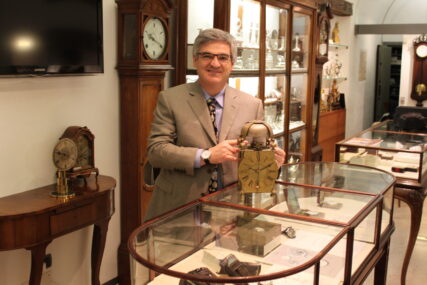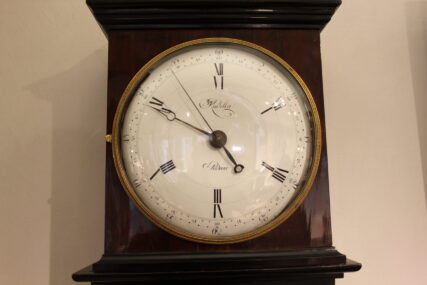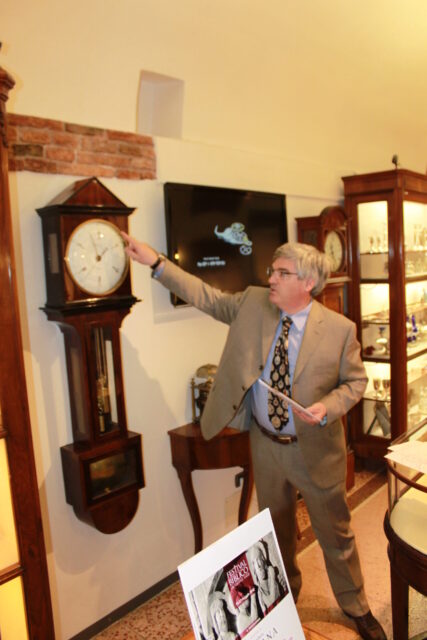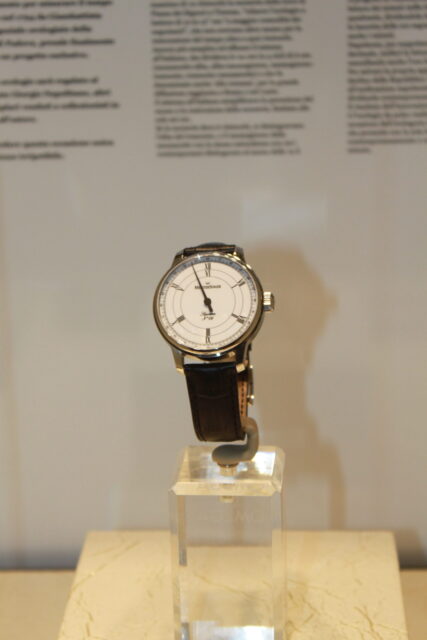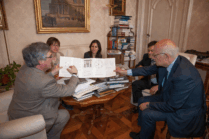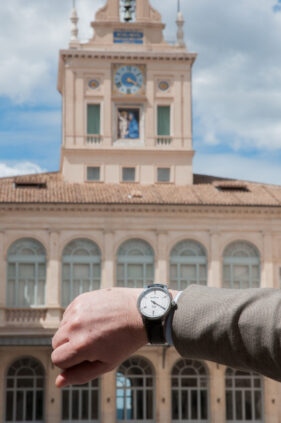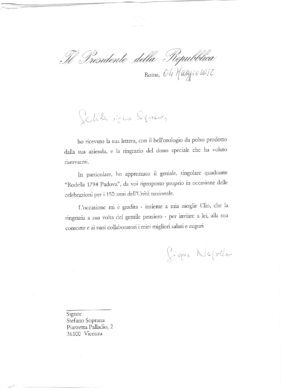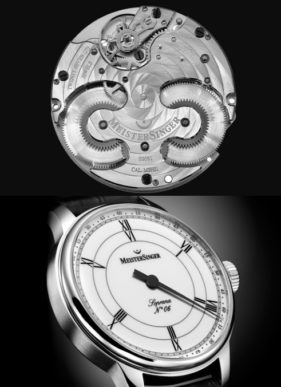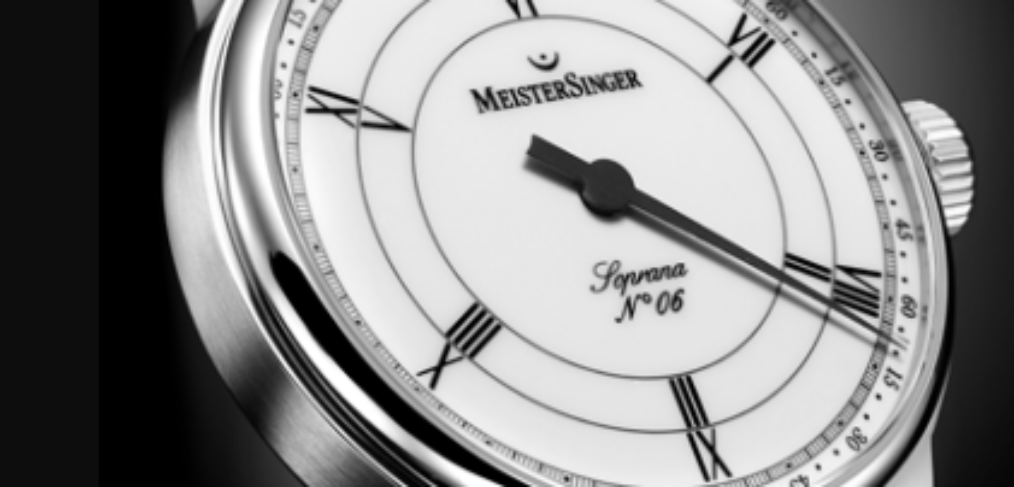
Soprana n°6
The first 6-hour wristwatch
On the 150th anniversary of the unification of Italy, the Soprana watch company, one of Italy’s 150 historic enterprises, and Movitalia, importer of the prestigious single-hand watch brand Meistersinger, create the first six-hour wristwatch.
An instrument for measuring time designed in 1794 by Giambattista Rodella, a genius watchmaker at the Specola in Padua, finally takes shape in an exclusive design.
In the history of watchmaking, the role of Italian master craftsmen has been fundamental
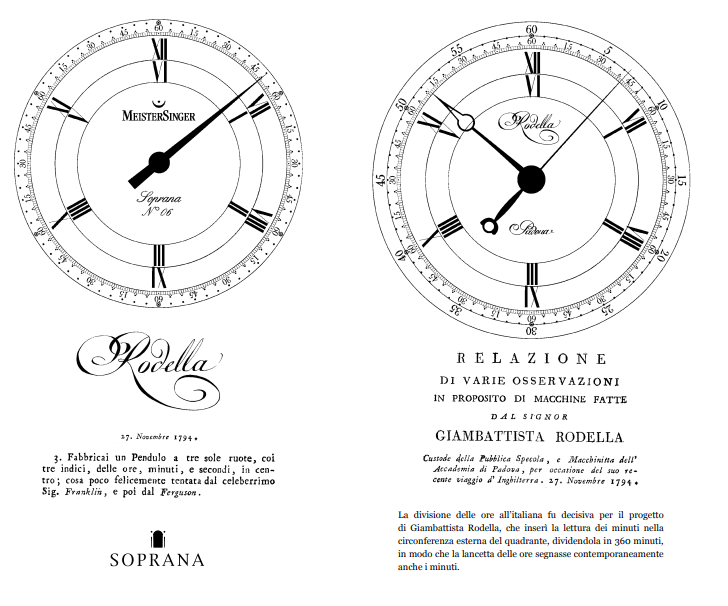
Initially, the dials graphically represented each of the 24 hours into which the day is divided, as witnessed by the clocks of the 14th century in Venice, Padua, Brescia and Mantua.
Similarly, each hour was chimed, up to 24 chimes.
To simplify the understanding of sound and the construction of chimes, the 24-hour cycle was soon divided into two.
As Capobianco, who in 1591 limited the chiming of the tower in Vicenza’s Piazza dei Signori to a maximum of 12 chimes, put it, ‘reducing the clock to striking 12 by 12’ was ‘for the greater convenience of shopkeepers’, who had no other means of measuring time other than those chimes.
Italian system
Even simpler and more effective was the Italian system, which divided the 24 hours into 4 cycles of 6 hours (midnight-dawn, dawn-midday, midday-sunset, sunset-midnight) and
which was also called ‘alla romana’, due to its widespread use in Rome and Lazio.
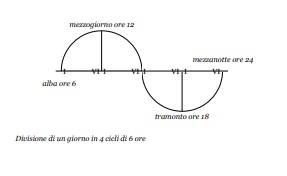
The Italian-style system simplified the perception of sound and the construction of the chime, which was limited to just six hours.
If the chime gave six chimes, one could distinguish sunrise from sunset, or midday from midnight as naturally as contemporaries distinguished midday from midnight at the sound of 12 o’clock.
In 1794, the inventiveness of Giambattista Rodella gave birth to a clock that indicated the hours, minutes and seconds in the centre, but with only three wheels, unlike many observatory regulators which had four wheels for the transmission and three wheels for the hour indication.
Since the main enemy of mechanical watchmaking is friction, a watch with only three wheels and with the three hour markers in the centre can be considered a fundamental innovation, as it effectively limits friction.
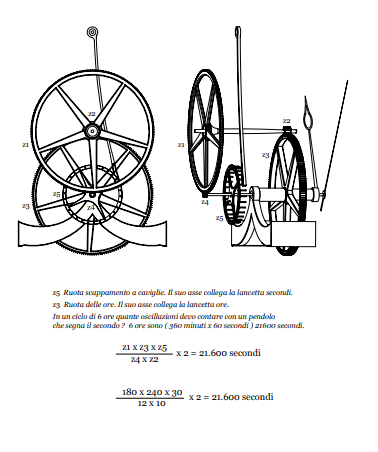
The division of the hours in the Italian manner was decisive for Giambattista Rodella’s design. He inserted the minute reading in the outer circumference of the dial, dividing it into 360 minutes, so that the hour hand also marked the minutes at the same time.
Napoleon, in order to suppress revolutionary decimal time, unified the time reading to twelve hours, also cancelling Italian time.
To save his application, Rodella, at the decline of the Venetian Republic, had to combine it with Napoleon’s unification by indicating 12 hours, but simultaneously dividing the dial into six.
Collaboration of Soprana and Meistersinger
The result of Giambattista Rodella’s innovation is the wristwatch made for this historic occasion by Soprana and Meistersinger watchmakers, which allows the hour hand alone to simultaneously and accurately read the minute as well.
The watch, a limited edition of 50 pieces, which is sold out to date, was presented in May 2012, and our jewellery store also had the honour of hosting the original 1794 Rodella
Soprana watch No. 6, the only one of its kind, was presented to the President of the Republic Giorgio Napolitano, in view of the important anniversary of the 150th anniversary of Italian Unification, and was presented at the Quirinale by Stefano Soprana and our Meistersinger area representative Marco Campedelli accompanied by their respective wive.
If you would like to request a pdf of the brochure ask us.

